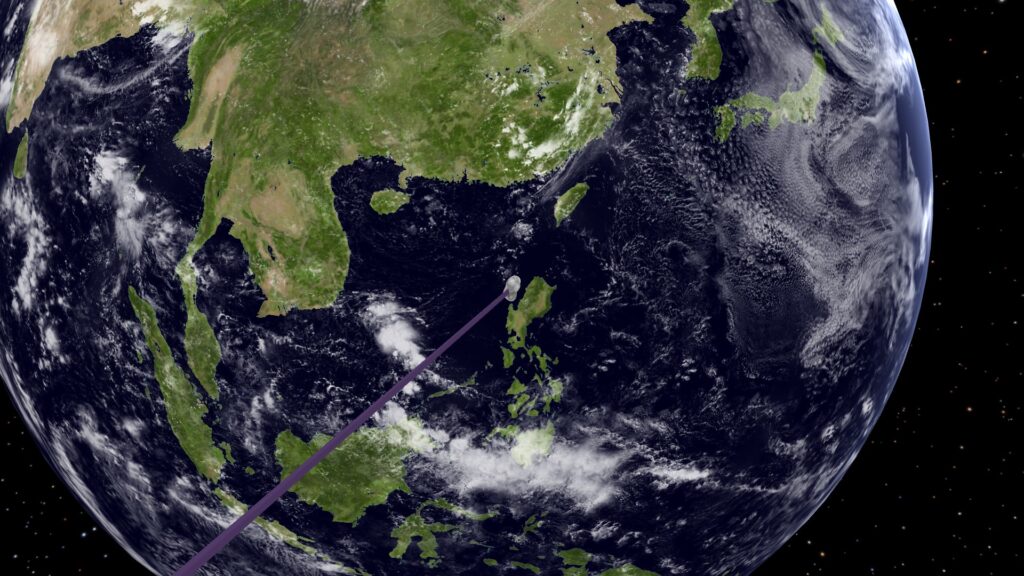This video shows the trajectory of the asteroid Apophis against the background of stars when observed from the Earth during 2029. It should be borne in mind that the trajectory is shown as if we were observing the asteroid from the center of our planet. For different points on the Earth’s surface, it will deviate from the one shown by several degrees (at maximum approach). The true trajectory will look more complicated due to the movement of the observer as the Earth rotates around its axis.
Less than five years remain until the meeting of Apophis and the Earth. On Friday, April 13, 2029, a 325-meter asteroid will rapidly fly past our planet. It will be perfectly visible to the naked eye, even in the city. At 20:30 UTC, it will reach maximum brightness: 3.14 apparent magnitude. In terms of brightness, it is comparable to the faintest star of the seven bright stars of the Big Dipper of Ursa Major (Megrez). At 20:57, Apophis will pass very close to the bright star Regulus (α Leo). Moreover, in some areas of the Earth, a very short-term occultation of this star by the asteroid can be observed.
At 21:45 UTC, Apophis will pass at a minimum distance of 38 thousand km from the center of the Earth at a speed of 7.4 km/s against the background of the Cancer constellation. That is, it will fly within five Earth radii from the surface of our planet. The orbits of geostationary satellites are approximately the same distance away. Then the asteroid will be in Gemini, while its brightness will weaken to the 4th magnitude. At about 22:20, it will reach the Auriga constellation. Crossing this constellation with the bright star Capella, Apophis will fade so much that it will hide from the naked eye. On April 14, at 14:54 UTC, the asteroid will pass 96 thousand km from the center of the Moon. However, it will not be possible to observe this approach even with telescopes because of the bright Sun, which will be in the sky nearby.
Since 2004, when Apophis was discovered, the parameters of its orbit have been significantly refined. And it can be argued that in the next century it does not pose an hazard to the Earth. Whether Apophis will threaten our planet in the future will become known after a close approach in 2029. Also, valuable information will be obtained after the OSIRIS-REx spacecraft enters orbit around it, which previously collected samples from the asteroid Bennu.
Modeling and rendering were performed by author of this publication using own software. The calculations took into account the mutual influence of the Sun, all the planets of the Solar System, the Moon and the asteroid on each other. Relativistic effects were also taken into account in the calculation.
The track Headway by Kai Engel sounds in this video. This track was not changed. Attribution 4.0 International (CC BY 4.0 DEED) license.





